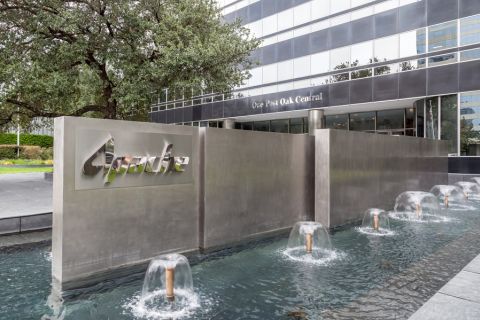For more than 50 years, E&P company Hocol SA has operated in Colombia, including the remote region of the upper Magdalena River Valley. Since 1984, the river valley – situated within the rugged Colombian Andes mountain range – has been home to four Hocol production fields that currently generate approximately 30,000 b/d of oil.
Hocol has taken a progressive approach to E&P throughout its history, and the Magdalena River Valley oil fields are no exception. The company has continuously sought to improve the efficiency and cost-effectiveness of its operations.

Surface pumps are one of many artificial lift mechanisms being used in Hocol’s Magdalena Valley fields. (Images courtesy of Honeywell)
In 2008, after consistent field output and productivity declines, Hocol took action to reverse the downward trend.
Reaching this point, however, required a thorough overhaul of the processes and technologies in the oil field. Hocol also needed to supply the oilfield operators with the tools necessary to be more efficient and productive. In the end, the fields needed to be greater than the sum of their parts, and the effectiveness of the operators was instrumental in achieving this.
The Magdalena River Valley spans from the lower extremes of the Andes through the arid badlands of the Tatcoa Desert and past the 17,061-ft (5,200-m) mountain Nevado del Tolima. In the valley, Hocol produces oil and gas from four production fields – San Francisco, Balcon, Palermo, and Monal – that, combined, can produce approximately 30,000 b/d of oil.
As field output declined over the course of several years, Hocol employed a mixture of various forms of production techniques in an attempt to spur recovery. The company took a progressive approach in its operations and mitigation strategies and tried to employ various secondary recovery techniques such as waterflooding to increase oil recovery. Additionally, Hocol tried water alternating with gas injection wells and drilled horizontal and highly deviated wells to help increase reservoir recovery potential, but these techniques failed to provide the overall total solution the company sought.
The four fields featured a mixture of well types, including primary production wells, along with wells that employed electric submersible pumps (ESPs) with variable speed drives, wells with progressive cavity pumps (PCPs), and wells with walking beam pumps. Hocol found this mixture of wells led to increased demand on operational surveillance. This, coupled with the decline in output, led Hocol to tackle the issue from a different angle.
Approach overhaul
Hocol looked to increase production efficiency, reliability, and safety by improving operator effectiveness with technologies and processes. To achieve this, the company sought to accomplish several major objectives.
First, to increase production and improve operator effectiveness, Hocol needed to secure a way to better visualize well conditions and obtain status information about the producing wells. This would enable operators to make more timely and qualified production decisions.
Also, operational personnel spent three-fourths of their time on routine rounds and well surveillance, driving from field to field in pickup trucks to check operations. This time on the road also increased the chance of driving accidents.
As a result, Hocol sought to reduce routine rounds for operational personnel without adversely affecting well performance. Ideally, eliminating routine well surveillance rounds would free up operator time to concentrate on activities to help increase production. And, by reducing the rounds, Hocol hoped it would subsequently increase safety.
To achieve its objectives and improve oilfield output, Hocol tasked service provider Equipo Y Controles (ECI) with eliminating routine rounds, increasing production visualization, and installing the technology necessary to enable remote operations. ECI began its work to help achieve Hocol’s objectives by surveying the four production fields.
During the survey, ECI found 36 well pads with groups of four or five oil wells feeding into one of four production centers. Each well pad was connected to a mixture of well types. For optimal results, well pad operation must be autonomous.
Specifically, nearly 110 producing wells comprised the fields and tied into a production facility. This included a mixture of production types with their own distinct nuances such as:
• Primary producer wells where oil comes to the surface under its own power;
• Gas-lift wells that employ gas injection to lift the producing emulsion to the surface;
• Wells that employed ESPs and variable speed drives (VSD) to mechanically lift oil to the surface;
• Wells that employed PCPs also to mechanically lift oil to the surface; and
• Donkey pump wells that use a surface walking beam to move a sucker rod that powers a downhole pump to lift oil to the surface.
The oilfield’s 36 well pads, evenly spread among the four production facilities, required complex SCADA information exchanges to remain productive. In addition, ECI found the ESP and VSD systems used on some of the producing wells lacked electric interfaces to enable operator insight.

Operations lie in the shadow of the majestic Nevada del Tolima.
Tighter digital connections
ECI’s answer to improving Hocol’s oilfield output came as a digital oilfield solution using Honeywell technology. For the well pads, this meant equipping each one with a programmable logic controller (PLC) that used wireless technology to communicate with field transmitters. ECI also installed hardwired interfaces to individual well VSDs, which enabled speed changes and provided the ability to capture speed, frequency, and power information economically.
The topology of the Hocol oil fields also played an influential role in the type of new technology ECI chose to install. The rugged terrain and surrounding vegetation made conditions unfavorable for long-distance point-to-point or multipoint communications, so ECI chose to enlist satellite communications for gathering well pad information from the controllers.
This approach provides flexibility for adding or deleting wells from the system, makes it easier to change production methods, and enables greater operator control. A resident redundant Honeywell controller manages production at the well pads. Well pad information – along with control set-point changes and actions from remote control rooms and geographically dispersed engineering discipline centers – are communicated easily via satellite.
Overall, this approach means Hocol’s SCADA application uses satellite communications to connect the right information to the right point in the system instead of relying on traditional hard-wired transmitters to route information to the appropriate end user. Specifically, under the new system, a very small-aperture terminal (VSAT) satellite communications system facilitates information exchange between various well pads, production facilities centers, and remote engineering centers. Data service units communicate with an outside antenna equipped with a transceiver. The transceiver sends or receives a signal via a satellite transponder that, in turn, sends and receives signals from an earth station computer that acts as a hub for this system.
Each end user is interconnected to the hub station using satellite in a star topology. This means that for one end user to communicate with another, each transmission has to go to the hub station and retransmits it via satellite to the other end user's VSAT, which handles data, voice, and video signals. Honeywell wireless field transmitters, which are installed at the wellheads, collect and load process information into a Honeywell PLC, providing more flexibility than traditionally used copper cable runs and ancillary cable trays.
Improved remote control
Redundant Honeywell Experion servers located at this hub enable communications between well pads, remote users, and remote production facilities as well as a Honeywell e-server connection that provides a way for remote engineering services, such as well surveillance, to monitor and send set points to specific wells. The e-server interfaces to the Internet, and this connection allows remote engineering services to monitor and send set points to specific wells. The e-server also extends to production facilities, making control and surveillance information readily available to operators. This type of connection provides a means for remote engineering service providers to make well-performance recommendations and highlight abnormal events.
This tighter remote link facilitates better communications, which is critical for remote monitoring. For example, Hocol has a performance contract with a well service surveillance provider for its ESPs and PCPs, which requires a high degree of remote surveillance to ensure optimum well performance. With this new remote connection, the service provider can monitor well performance more easily.
The digital oil field’s wireless features also extend to hazardous areas, where Hocol now is using industrially hardened wireless transmitters. The Honeywell XYR6000 transmitters – mounted directly on the wellhead – help monitor variables within the area by acquiring process measurements such as differential pressures and temperatures directly from the wellhead. A broader OneWireless network helps transmit this information for operators to compile and review easily.
This wireless arrangement provides flexibility and expansion capabilities around the system’s wellheads, and simplifies the process of adding or changing wells by minimizing associated logistical requirements. For example, the system makes it simpler to change a well’s recovery method with minimal impact to the automation configurations.
Efficiency, operational gains
To date, Hocol’s digital oil field has delivered results that point to a reversal in the company’s previous downward trend. Within six months, Hocol was able to reverse the downward trend of the oil fields’ output with the new implementation, and the company credits the improved insight and communication offered by the new system. With this increased system-wide insight enabled by the digital technology, operators now are tapping into a wealth of data previously unavailable. This insight is improving overall efficiency and, as a result, field output.
Before, nearly 75% of Hocol personnel dedicated time to routine operation rounds, physically driving from oil field to oil field. With the wireless technology now in place and forming the backbone of the digital oil field, routine operator rounds have been reduced, allowing Hocol operators to concentrate on activities that impact production efficiencies.
Also, the addition of tight remote surveillance capabilities to the production and engineering centers is providing a high degree of situational awareness and enabling more proactive responses to abnormal situations. The company estimates that facilitating quicker and more appropriate responses to abnormal well performance could mitigate the loss of millions of dollars per day.
Recommended Reading
Marketed: Delta Minerals Non-producing Sale in Colorado
2024-05-02 - Delta Minerals LLC has retained EnergyNet for the sale of non-producing minerals in Bent, Cheyenne and Kiowa counties, Colorado.
Marketed: Navigation Powder River Eight Leasehold Lots in Wyoming
2024-04-09 - Navigation Powder River has retained EnergyNet for the sale of eight non-producing federal leasehold lots in Converse and Campbell counties, Wyoming.
APA Closes $4.5B Callon Deal, Deepening Permian Roots
2024-04-01 - About two-thirds of Apache’s daily production will come from the Permian Basin after APA Corp. completed its $4.5 billion takeout of Callon Petroleum.
Analysts: Diamondback-Endeavor Deal Creates New Permian Super Independent
2024-02-12 - The tie-up between Diamondback Energy and Endeavor Energy—two of the Permian’s top oil producers—is expected to create a new “super-independent” E&P with a market value north of $50 billion.
Marketed: Paloma Natural Gas Eagle Ford Shale Opportunity in Frio County, Texas
2024-02-16 - Paloma Natural Gas has retained EnergyNet for the sale of a Eagle Ford/ Buda opportunity in Frio County, Texas.


